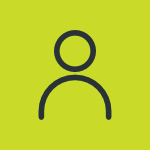The Karnataka High Court observed that if the worker under disciplinary action is granted the status of “protected workman,” it would only encourage other workers to engage in similar activities, seeking protection under the same status.
The Court partly allowed a Petition challenging an order from the First Respondent (Assistant Labour Commissioner), regarding the status of “protected workmen” under Section 33 (4) of the Industrial Disputes Act, 1947 (Act).
The Court noted that the Assistant Labour Commissioner’s reasoning was flawed, as the absence of serious charges or conviction isn’t enough.
The Bench of Justice K. S. Hemalekha observed, “if the delinquent workman facing disciplinary proceedings is bestowed with the status of “protected workman”, it will nothing but encourage the other workmen to indulge in such activities and get them protected under the shield of “protected workman”.
Advocate Prashanth B. K. appeared for the Petitioner and Government Pleader Rashmi Patel appeared for the Respondent. M/s. Arm Strong Design and Acmite India Manufacturing Pvt. Ltd. challenged an order from the First Respondent (Assistant Labour Commissioner), regarding the status of “protected workmen” under Section 33 (4) of the Industrial Disputes Act, 1947 (Act). The Union (Second Respondent) sought this status for five workmen, including Umesha K.P., amidst ongoing disciplinary proceedings against him. Despite the petitioner’s pending response, the Assistant Labour Commissioner granted protected status to all five, including Umesha K.P. This led to the petitioner’s dismissal of Umesha K.P., with an application for approval under Section 33 (2) (b) of the Act pending.
Also read: Jacob John Paul Joins InterContinental Chennai Mahabalipuram Resort as Director of HR
The Court noted that Rule 62 (2) of the Industrial Disputes (Karnataka) Rules, 1957 (State Rules), similar to Rule 61 (1) of the Industrial Disputes (Central) Rules, 1957 (Central Rules), mandates that every registered trade union must inform the employer by April 30th each year of the names and addresses of officers employed in the establishment who the union believes should be recognized as “protected workmen”. Any changes in these officers must be communicated to the employer within 15 days. In this case, the union sought a decision on the status of “protected workmen” from the Assistant Labour Commissioner before the petitioner could respond to their letter.
“In terms of Section 33 (4), only those trade union can get their workmen get declared as “protected workmen” who are registered trade union under the Trade Unions Act, 1926 in accordance with Rule 62 (2) of the Industrial Disputes (Karnataka) Rules, 1957”, the Bench noted. Section 6 of the Trade Unions Act outlines the prerequisites for registration, including the constitution of the trade union’s executives following the Act and its rules. This section mandates that registered trade unions establish rules covering various aspects, including the appointment of the executive body.
The Court observed that when a union seeks the special status of “protected workmen” for its office bearers, it must provide the requested details to the employer as mandated by law. Section 6 of the Trade Unions Act specifies that only office bearers appointed or elected in accordance with the union’s rules can be communicated to the employer. If there are doubts about the legitimacy of the office bearers’ appointment, the employer can request details from the union. This status is granted to ensure the smooth functioning of the trade union and protect office bearers from employer victimization. The Bench observed, “the “protected workmen” is provided safeguards against any action of management and the said safeguard is not available to the other workmen, thus the employer has every right to ensure that the status of the “protected workmen” sought for by the union is of genuine persons and the shield of “protected workmen” sought is not to be misused”.
The Court noted that per the evidence Umesha K.P. was found guilty in the enquiry report submitted. Later, Union, possibly to protect Umesha K.P., included his name as a “protected workman” in a letter, without waiting for the mandated 15-day response period. While the pendency of disciplinary proceedings alone may not typically preclude “protected workman” status, if a person is proven guilty in such proceedings or faces criminal charges after a police investigation, they may be disqualified from such status.
The Bench emphasized that the designation of “protected workmen” is not automatic. Employers possess discretion to decide whether to grant this status to a worker. Even for minor offences, the employer may choose not to confer the special status of “protected workmen” upon the worker.
Furthermore, the Bench noted that the inquiry officer found Umesha K.P. guilty, and a second show-cause notice was issued. However, Union included Umesha K.P. in the list, replacing Ravi Kumar, and filed a petition before the Labour Court, seeking the declaration as “protected workmen”. This action was taken without waiting for the management’s reply. Granting “protected workman” status to a worker facing disciplinary action sets a dangerous precedent and may encourage other workers to engage in similar misconduct to seek protection under this status.
The Court held that the Assistant Labour Commissioner’s reasoning that the worker is not facing serious charges or has been convicted was not justified. The matter needs to be reexamined by the Labour Court based on established legal principles regarding the entitlement of a worker to be declared as a “protected workman” considering the facts mentioned above.
Accordingly, the Court partly allowed the Petition, set aside the impugned order and remitted the case back to the Assistant Labour Commissioner for afresh consideration.
Cause Title: M/S. Armstrong Design And Acmite v The Assistant Labour Commissioner
Appearance:
Petitioner(s): Advocate Prashanth B. K.
Respondent(s): Government Pleader Rashmi Patel and Advocate T.S. Anantharam
Click here to read/ download the judgment
Stay connected with us on social media platforms for instant updates click here to join our LinkedIn, Twitter & Facebook



































